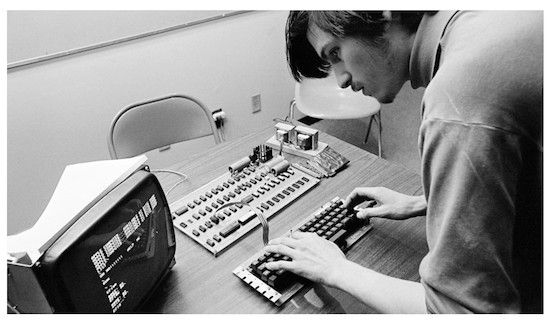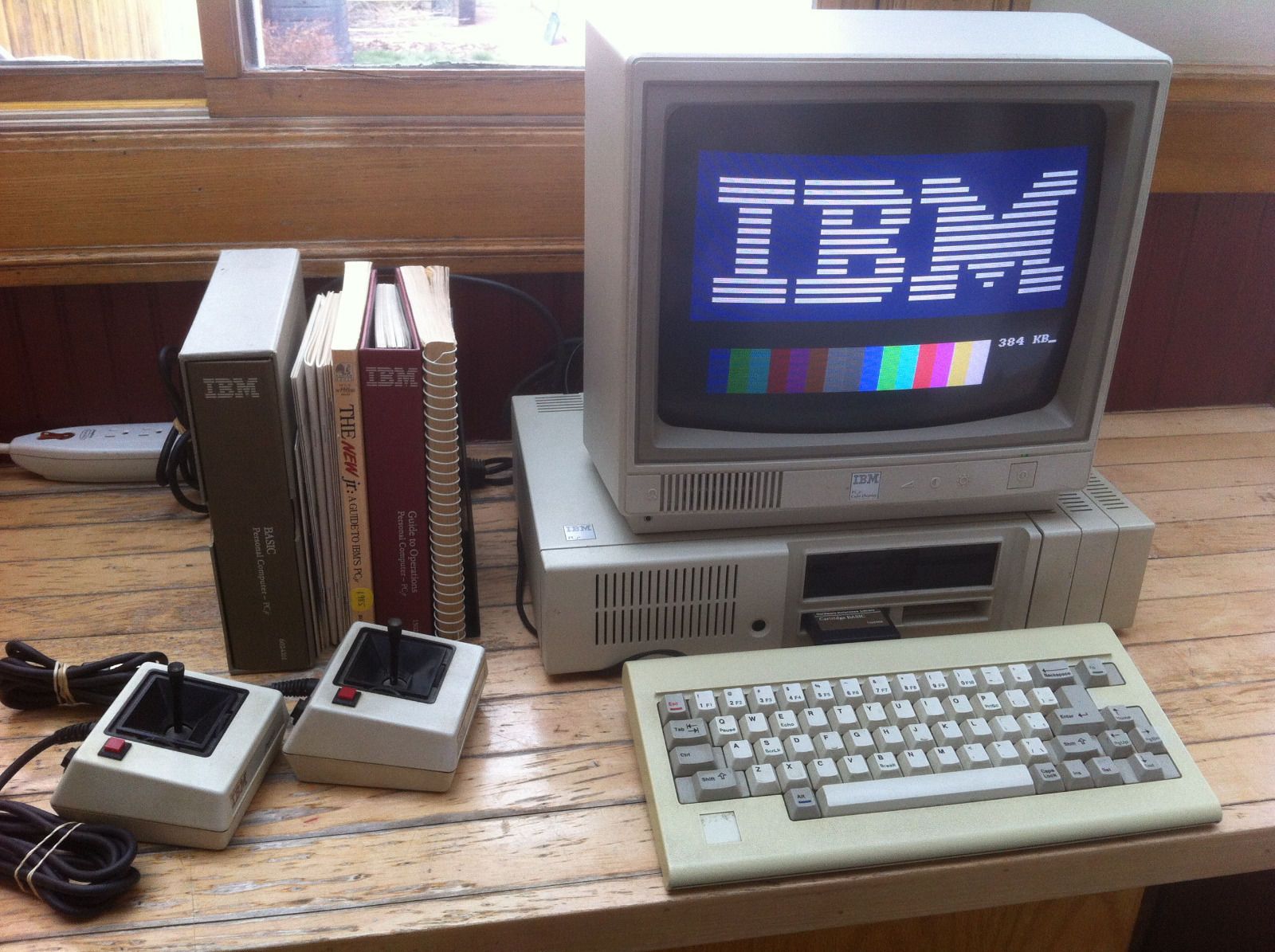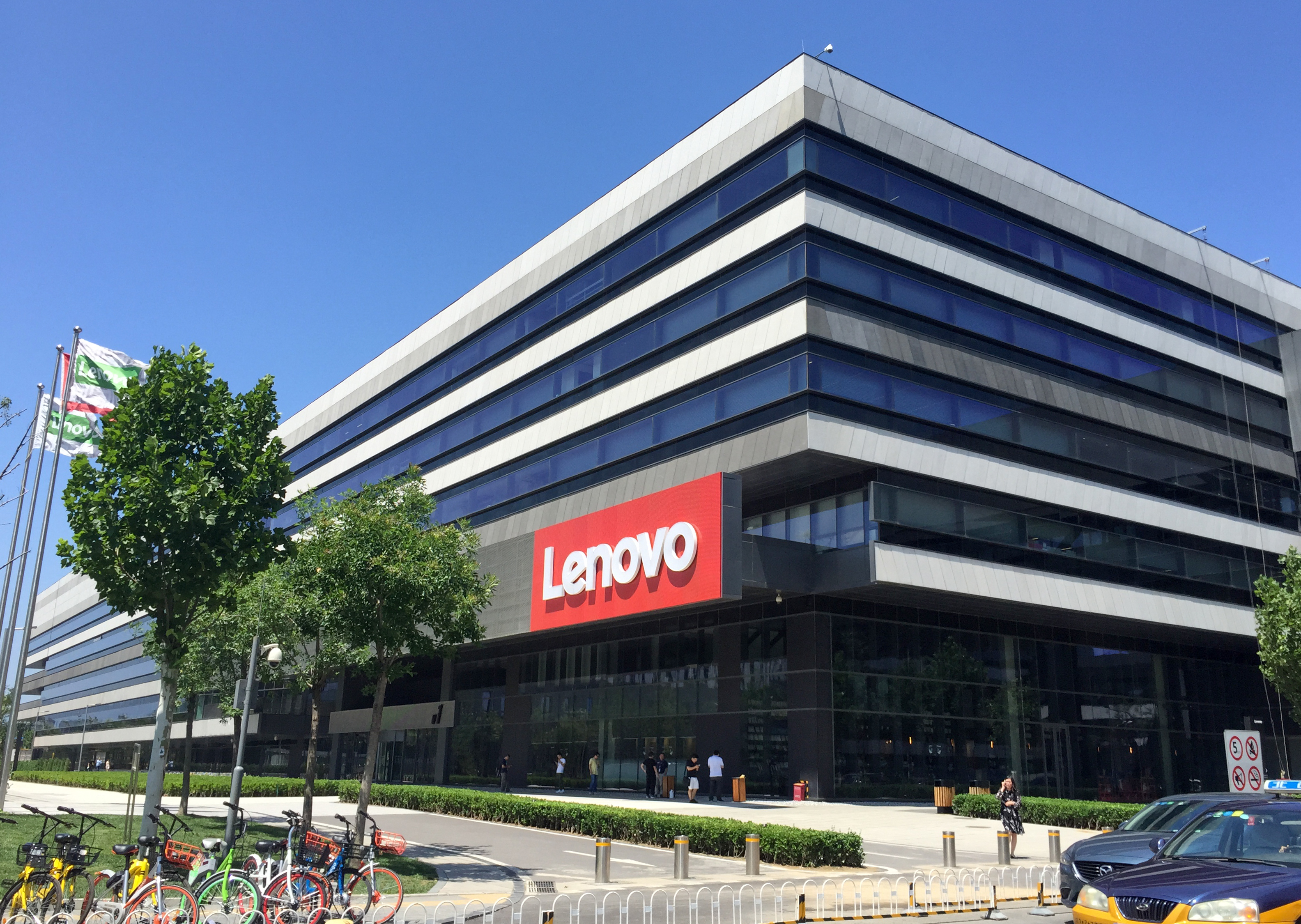
The history of defeats and failures is no less interesting than the history of ups. Especially when it comes to IBM - the legendary "blue giant" that determined the development of information technology throughout the 20th century.
On August 12, 1981, Don Estridge presented the IBM PC to the public. The presentation did not cause a stir, but within a few years millions of people were using computers from IBM. And after a little time, practically nothing remained of the leadership: the large-scale PC market was outright lost to competitors, and in 2005 the remnants of this business were sold to the Chinese company Lenovo.
In the recently published monograph "IBM: The Fall and Rebirth of a Great Company" D. Cortada tried to answer the questions, how and why, with colossal resources and experience, the corporation could not stay on the personal computer market .
We chose the main thing from the study.
"A tool for new times"
The history of the desktop didn't start at IBM. First there was the Intel 4004 microprocessor (1969 - 1971), and the 8080 processor (1974), then “amateur” assemblies based on it and the $ 400 Altair 8800 set . In 1977, Steve Jobs introduced the Apple II, the Commodore introduced the PET, and Tandy introduced the TRS-80. At that time, they were more like toys, household appliances for nerds, with simple video games and modest programming tools on board. And with a price tag three orders of magnitude less than serious business computers from IBM (" mainframes "), which cost over a million dollars.

Steve Jobs and Apple II
The situation began to change with the advent of popular software: in 1979 the VisiCalc program was released, the next year - the Wordstar word processor, which were sold in large print runs for that time. Desktop computers interested commercial users, and IBM, which by the end of the 70s was the undisputed leader in the data processing market (including due to the revolutionary S / 360 ), could not ignore this fact: it became clear even to the leadership far from the consumer market, that it was necessary to react somehow to what was happening.
And the "blue giant" reacted. Moreover, in a completely extraordinary way for the company. The plan that engineer Bill Lowe prepared for Frank Carey (then the head of the corporation), implied the allocation of a separate, isolated production site in Boca Raton for the project of creating a mini-computer. This made it possible not only to avoid the complex procedures of project coordination adopted at IBM, but also to keep what was happening a secret from competitors (and from their own sellers, with their skeptical attitude towards everything new). And what is even more interesting, instead of the normal 4-5-year time frame for IBM, Lowe planned to complete the project in just one year, including through the acquisition and use of off-the-shelf components and third-party software. Chips were bought from Intel, tabular processors from Lotus, and the operating system was supplied by young IT entrepreneur Bill Gates. So that, in case of failure, the bumps did not fly towards the corporation, it was decided to leave the rights to QDOS to Microsoft.Then it seemed like a smart and forward-looking decision ...

Advertising campaign for IBM PC.
IBM top management was wary of the project, but the go-ahead was received. In just a year, Low's team (who was later replaced by Don Estrage) was able to make an organizational and technological breakthrough and release the first IBM PC. The combination of a successful advertising campaign (the face of the system was made by the “little tramp” Chaplin), a competent distribution system and retail sales made it possible to ship 200,000 units in the first year and receive 1 billion dollars in revenue. No one expected such a triumphant result: it was assumed that the PC direction would be a small side business, and mainframes would remain the main one.
Encouraged by the success, engineers from Boca Raton continued to develop the direction: in 1983, the IBM XT was released, and the following year, the IBM AT. IBM's share of the personal computer market has reached 75%! Together with IBM, the entire industry developed, and thousands of programs for the PC appeared. The author of the book considers the unusual model of out-of-bureaucratic release of products, unusual for a corporation, to be the decisive factor of success. As long as the Low-Estrage team worked as a separate “firm within the firm” and lived by its own laws, focusing on the methods and approaches of Gates and Jobs, and not on the “basic principles” and traditional corporate culture of IBM, everything went exactly as it should.
Chasing the market
But it was not there. In 1980, John Opel became the CEO of the company , a manager who decided to optimize the activities of all areas and is very far from the topic of personal computers. By the way, at that time, many managers at IBM did not even use e-mail, because it was the responsibility of their secretaries and assistants. Business was going well: in 1981, IBM's revenue reached $ 29 billion, and in 1984 it rose to $ 46 billion, shares jumped twice. On the agenda is not the pursuit of innovations and breakthroughs, but the systematic development of the market by increasing production resources. As a result, the Estrage team lost their independence, lost touch with consumers and got bogged down in the bureaucratic network that Carey had once saved her from.

IBM PC Jr is a failed experiment and the beginning of the end.
The release in March 1984 of the “ PC Jr. ”Became a prologue to the future disaster. The computer had an awkward tiny keyboard, and most of the software was incompatible with other IBM personal computers. The same was true for the periphery.
, . , «» «» . , — , . IBM , , . . IBM , 250 ! ESD . … IBM .
Why did this happen? There were several reasons. The first is the bureaucracy that hit development . Unlike the first models, design now went through the entire multi-stage approval and approval process that has been adopted by IBM since almost the 1920s. So now the final product met the company's internal requirements - but was far from consumers. The second factor is the underestimation of the PC market, rates and directions of growth and its features on the part of the corporation's management. While all competitors reduced the cost and quickly adapted production to the changing realities of the component market, IBM followed the path of fixed long-term estimates and projects. Finally, a large staff and a corporate apparatus, requiring costs for its maintenance, further inflated the cost of PCs, making IBM products uncompetitive also in terms of price.
Competitors realized that IBM had de facto set the technical standards for personal computers, so they developed compatible versions and began to bring them to market faster and sell them cheaper. Customers saw that clones were just as good as IBM's and that they had a variety of software and networking tools.
A kind of symbol of the end of the technological leadership of IBM was the plane crash on August 2, 1985, in which Don Estridge died, shortly before that due to the conflict, he had left his post as head of the personal computers department.
Colossus with feet of clay
During the second half of the eighties, IBM continued to sell millions of computers, but the profit per unit of production was getting smaller and smaller. As well as market share. Alas, the company was unable to effectively respond to changes in the use of personal computers - this included, among other things, the transition to network technologies and the proliferation of user interfaces. Bill Lowe, who took over from Estridge, took the traditional approach to development: he believed that personal computers and their software should be tested as rigorously as the rest of the company's products.
, , () . , . , , , , . , , .
The sales system also faced sluggishness. The approval of all sales and discounts took a very long time and through many instances. So, it took a year and dozens of meetings to agree on a deal for 6,000 cars with American Standard!
In addition, Lowe made a number of serious strategic mistakes . For example, he turned down a deal with Bill Gates, who in 1986 offered him to buy a part of Microsoft (they say that out of fear of antitrust claims). Or made a bet on OS / 2 development : more than 1000 programmers, a budget of $ 125 million a year - and actually a failure after the release. Or he was in no hurry to master the new, faster 386 chips from Intel, which were adopted by competitors.
IBM couldn’t come to terms with the decline of the mainframe era, although profits from them were noticeably declining. Many customers were replacing mainframes with PCs because of the significantly lower cost of computing, and unfortunately for IBM, these were most often products from competitors such as Compaq and Sun. IBM computers sold poorly and made little profit due to their high cost. As a result, in 1986, profit fell by 27%, while revenues increased by only 3%.
Against the background of low financial indicators, the management decided to reduce and rotate personnel, and, according to the author of the book, this only worsened the situation: due to an ill-conceived rotation system, a huge number of talented employees left the company. Lowe himself became a victim of the situation: in late 1988 he was replaced by Jim Cannavino, one of the few achievements of IBM in which the release of the RS / 6000 workstation was. Incorporating an innovative RISC architecture, the RS / 6000 generated over $ 4 billion in revenue between 1990 and 1992. and became a symbol of how difficult it has become for IBM to innovate: if it were not for bureaucracy and internal divisions, the product could have been released several years earlier and saved the PC and mainframe business.
The OS / 2 operating system deserves a special place in this story. IBM and Microsoft worked together on it, but the further, the less trust and a common language found partners, so that eventually IBM continued to develop OS / 2 on its own. Thousands of system developers believed it would be the next era of IBM's success. However, despite all the efforts and huge production costs, OS / 2 was unable to conquer the rapidly growing market. In 1992, the fiasco was already evident: 15 million copies of DOS and 10 million Windows - and only 2 million copies of OS / 2, many of which were supplied free of charge. Hope was finally dashed in October 1995 when a number of corporate clients, including State Farm Insurance, Caterpillar and UPS, abandoned OS / 2. As Lou Gerstner later wrote, “apparently my colleagues were unwilling or unable to admitthat the war is over and they have suffered a crushing defeat: Windows had a market share of 90 percent versus OS / 2's 5 or 6 percent. ”
!

Lenovo.
IBM did not give up and pulled on the personal computer business until the early 2000s, when Sam Palmisano became the head of the company, admitting: “We were playing the fool. We didn't see the PC as a platform. ” In 2005, he signed a deal to sell this business to the Chinese company Lenovo. The author of the study is confident that the move was "a smart, truly creative solution to the lingering problem of personal computers at IBM." At that time, the corporation was the third largest manufacturer of personal computers in the world - but experienced huge problems with the profitability of the consumer direction. On the other hand, IBM continued to expand its presence in the international IT services market, with China as a priority region.And in this context, the deal with Lenovo was able to kill two birds with one stone - finally rid the corporation of low-income business and gave access to the largest growing economy in Asia.
This deal was one of the most virtuoso in the history of IBM, but for many iBeem people it nevertheless remained the sad ending of a quarter-century chapter in the life of the company.
Why did IBM fail the PC business?
It is obvious that the crisis was caused by strategic miscalculationssenior management of the corporation. Due to misplaced priorities, inability to adapt to the software development market, and adherence to old-school corporate values, IBM management missed the opportunities that were in its hands - and Apple, Intel and Microsoft successfully took advantage of its mistakes. As some researchers have noted, “If IBM executives were actively supporting the personal computer, if they positioned the iBeAM version of the processor in the market, and if they quickly replaced Microsoft's personal computer operating system, IBM’s share price would never collapse the way it did. And the company's culture, with its emphasis on job security, would remain intact and admire the entire business world. ”
Another reason is high operating costs caused, on the one hand, by the giant staff of the corporation (only an order of magnitude more employees worked on the software than at Microsoft), and, on the other hand, by an archaic cost allocation scheme that did not take into account the real economic situation in the departments. As a result, IBM received an unaffordable production cost for the consumer market, because of which it was either simply not bought or bought at a discount. Yes, this was not so important in the early stages, but in the decisive battles for market share, it turned out to be a key problem.
Finally, another factor that led to the collapse of the direction is the corporate culture of IBMand the worldview that emerged from the mainframe business. Tradition called for a 100% iBeAM system as a way to remain the dominant company where customers would turn to computers first - and as a result, the company wasted billions on developing its own products, rather than leveraging third-party technologies effectively. While the PC business has evolved rapidly and responsively towards flexible, market-driven networking behaviors, IBM has been clinging to a governance model that comes from the good old 1950s. Even the legendary IBM distribution system, with its deepest attention to the needs of customers, could not adapt to the new realities: like most customers, managers did not understand what was the point of switching to a PC.and continued to sell fast aging mainframes.
Instead of a conclusion
In the 1980s, the triumphant march of IBM, begun at the beginning of the century, ended. IBM's success in the mainframe business has failed to prevent decline in much of its business The history of the IBM PC is the story of a corporation that has become too big, too bureaucratic, and too detached.
